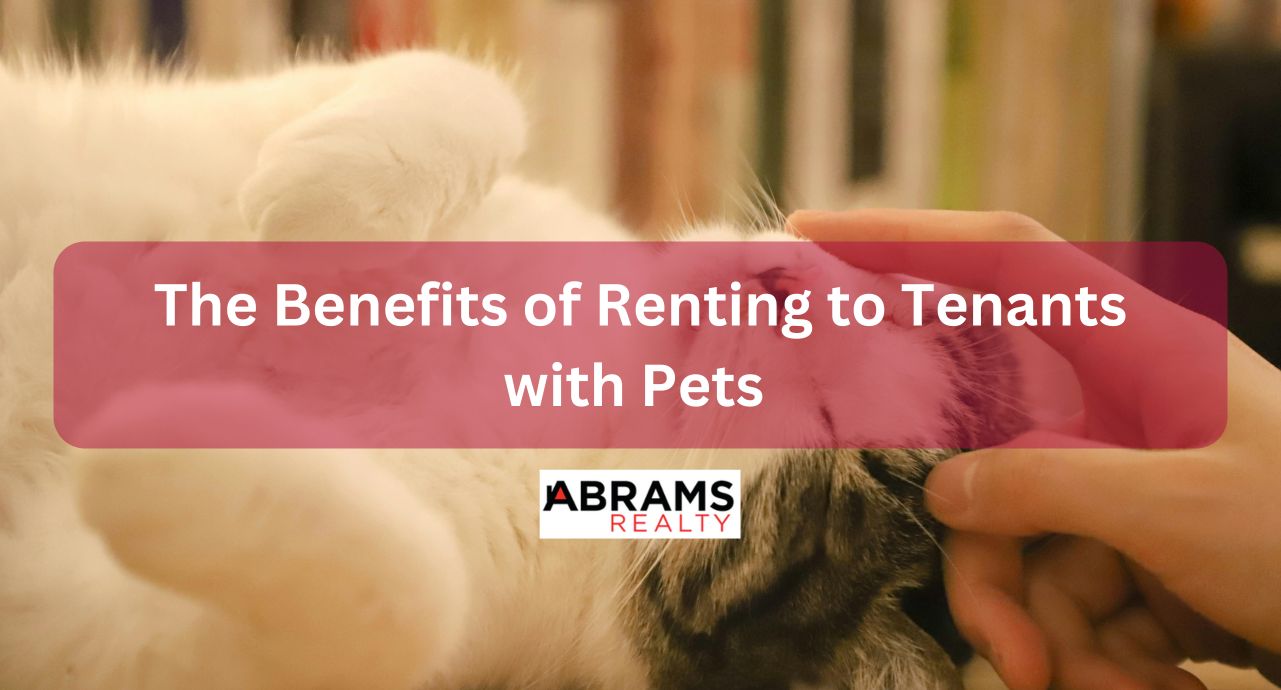Key Takeaways
- Allowing pets increases the tenant pool and reduces vacancy rates, leading to a steady income stream for landlords.
- Pet-friendly properties can command higher rent and reduce tenant turnover, benefiting long-term profitability.
- Implementing clear pet policies, such as deposits and screening, can help mitigate potential risks like property damage or noise complaints.
- Responsible pet owners tend to be stable tenants, fostering a positive community atmosphere within rental properties.
Many rental property owners struggle with the decision of whether to allow tenants with pets.
While some landlords are hesitant due to concerns about property damage or liability, others recognize the financial and practical benefits of making their rental units pet-friendly.
With a significant percentage of households owning pets, landlords who allow them can access a larger pool of potential tenants.
By adopting a pet-friendly policy, landlords can reduce vacancies, increase tenant satisfaction, and even justify higher rental rates.
While there are challenges to consider, the advantages often outweigh the risks when proper policies are in place.
Understanding the key benefits and potential challenges will help landlords make an informed decision that benefits both their investment and their tenants.
Keep on reading this article by Abrams Realty to learn more!
Benefits of Allowing Pets in Your Rental
Larger Tenant Pool
A significant number of renters are pet owners, and allowing pets increases the number of potential applicants.
Many pet owners struggle to find suitable rental housing, so offering pet-friendly accommodations can make your property more appealing.
Reduced Vacancy Rates
Pet-friendly units attract tenants more quickly, reducing the time a property sits vacant.
A shorter vacancy period means steady rental income and less time spent advertising and showing the property to prospective tenants.
Higher Rental Income
Landlords can charge pet rent, which adds to monthly earnings, and implement pet deposits to offset any damages.
Some tenants are even willing to pay slightly higher rent to secure housing that accommodates their pets.

Lower Tenant Turnover
Pet owners are more likely to stay long-term, as finding pet-friendly rentals can be challenging.
The longer a tenant stays, the less time and money landlords have to spend on turnover-related costs, such as cleaning, repairs, and marketing.
Responsible Tenants
Many pet owners are responsible renters who are more likely to adhere to lease agreements and maintain the property.
Since pet ownership requires care and responsibility, these tenants are often more stable and invested in maintaining a good rental relationship.
Community Engagement
Pet-friendly properties can foster a sense of community among tenants, leading to a more positive living environment.
Pet owners tend to be more social, and designated pet areas in rental communities can help facilitate neighborly interactions.
Competitive Advantage
Allowing pets makes a property stand out from others that have strict no-pet policies, increasing its desirability.
By being one of the few landlords that welcome pets, you can attract high-quality, long-term tenants who are willing to comply with pet-related policies.
Potential Challenges of a Pet-Friendly Rental
Property Damage
Pets can cause wear and tear such as scratched floors, chewed fixtures, and carpet stains. A pet deposit or a non-refundable pet fee can help mitigate this risk.
Landlords can also include lease clauses requiring tenants to pay for damages beyond normal wear and tear.
Noise Complaints
Dogs that bark excessively or other noisy pets may disturb neighbors. A lease clause requiring responsible pet ownership can help manage this issue.
Landlords can also implement a pet screening process to assess potential behavioral concerns.

Allergies and Health Concerns
Some tenants may have allergies to pet dander. Landlords may consider designating specific pet-friendly units or implementing cleaning requirements.
Proper ventilation and deep cleaning between tenancies can help minimize allergen exposure.
Odors and Cleanliness
Pet odors can be difficult to remove, particularly if tenants do not maintain cleanliness. Regular inspections and cleaning policies can help.
Additionally, requiring tenants to keep litter boxes clean and properly dispose of pet waste can prevent odors from becoming an issue.
Liability Issues
If a pet bites or injures another tenant, landlords could be held liable. Having an insurance policy that covers pet-related incidents is recommended.
Some landlords require tenants to carry renters’ insurance with liability coverage for their pets.
Breed and Size Restrictions
Some pets may be more prone to causing damage or disturbances. Landlords should clearly outline any restrictions in the lease agreement.
Restrictions should be carefully considered to ensure they do not violate Fair Housing Laws (e.g., breed restrictions on assistance animals).
Increased Maintenance Costs
More frequent cleaning, repairs, and pest control may be required for pet-friendly properties.
Factoring in these costs when determining rental rates can help offset additional expenses while keeping the property in good condition.
Ensuring Compliance With Fair Housing Laws
Understand Service Animal and ESA Regulations
Under the Fair Housing Act, service animals and emotional support animals (ESAs) are not considered pets and must be accommodated.
This means that even properties with a no-pet policy must allow these animals without discrimination.

No Additional Fees for Assistance Animals
Landlords cannot charge pet fees or deposits for service animals or ESAs, even if a property has a no-pet policy. This ensures individuals with disabilities are not unfairly burdened.
Proper Documentation Requests
Landlords can request documentation from a licensed healthcare provider to verify the need for an emotional support animal but cannot ask for detailed medical records.
This helps confirm the legitimacy of a tenant’s request while maintaining privacy and compliance with the law.
No Breed or Size Restrictions for Assistance Animals
Unlike pets, landlords cannot impose breed or weight limits on service animals or ESAs. For example, a large dog that serves as a service animal cannot be denied based on weight restrictions.
Avoid Discriminatory Practices
Rejecting a tenant solely because they have a service animal or ESA can lead to legal consequences.
Ensuring fair treatment of all applicants regardless of their disability status is crucial to avoiding legal trouble.
Educate Property Management Staff
Ensure all property managers and leasing agents are trained in Fair Housing Act compliance to avoid violations.
Misunderstandings or incorrect enforcement of pet policies could result in lawsuits or complaints against the property.
Include Fair Housing Compliance in Lease Agreements
Clearly outline policies related to assistance animals to prevent misunderstandings and disputes.
Having specific clauses that differentiate pets from assistance animals can help ensure compliance with the law while maintaining a well-managed rental property.
Bottom Line
Allowing pets in rental properties offers numerous benefits, including reduced vacancies, increased rental income, and longer tenant retention.
Abrams Realty specializes in helping landlords navigate the complexities of rental property management, including creating pet policies that maximize benefits while minimizing risks.
Contact us today to learn how we can help you manage your rental property efficiently and successfully.


